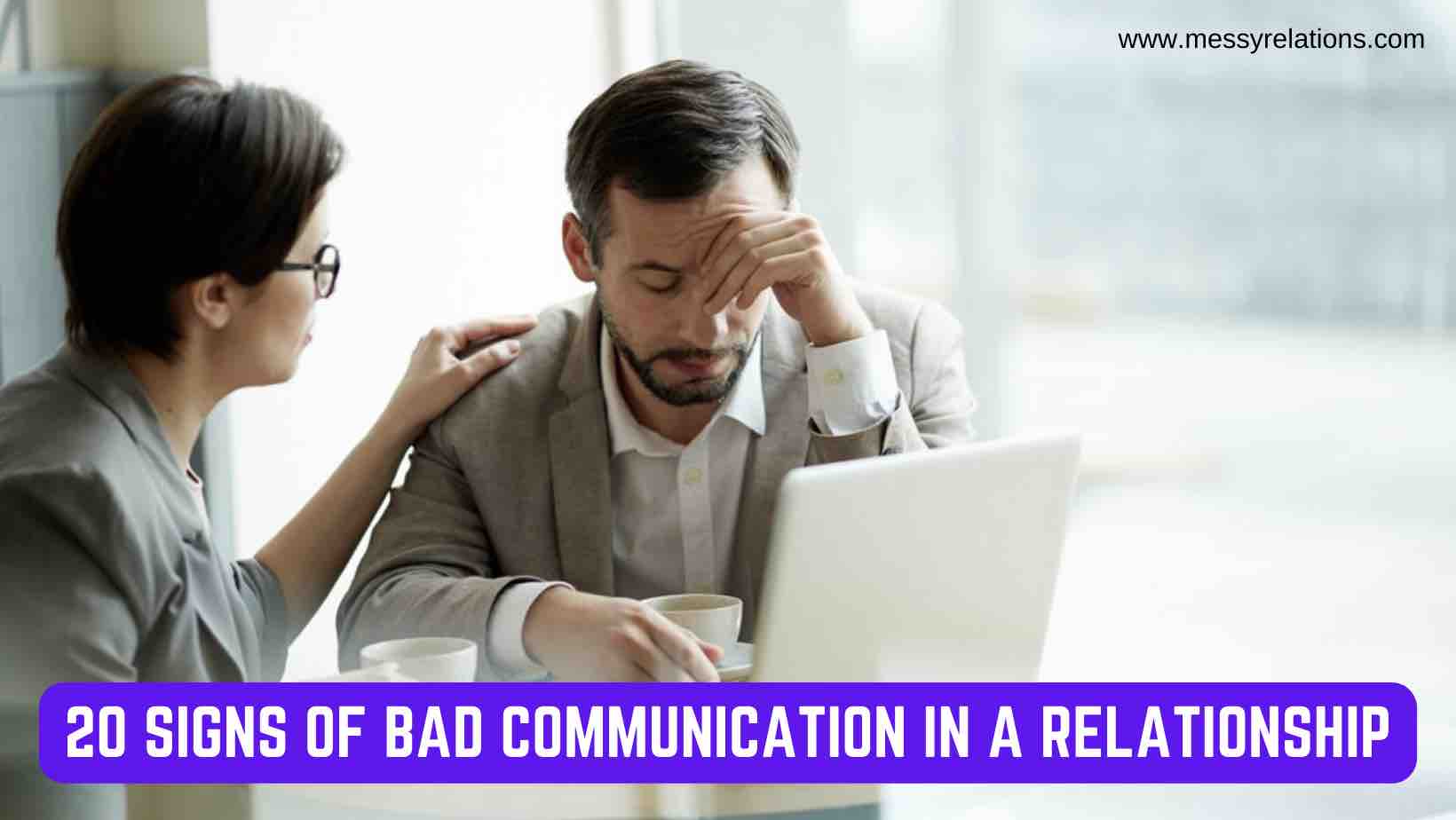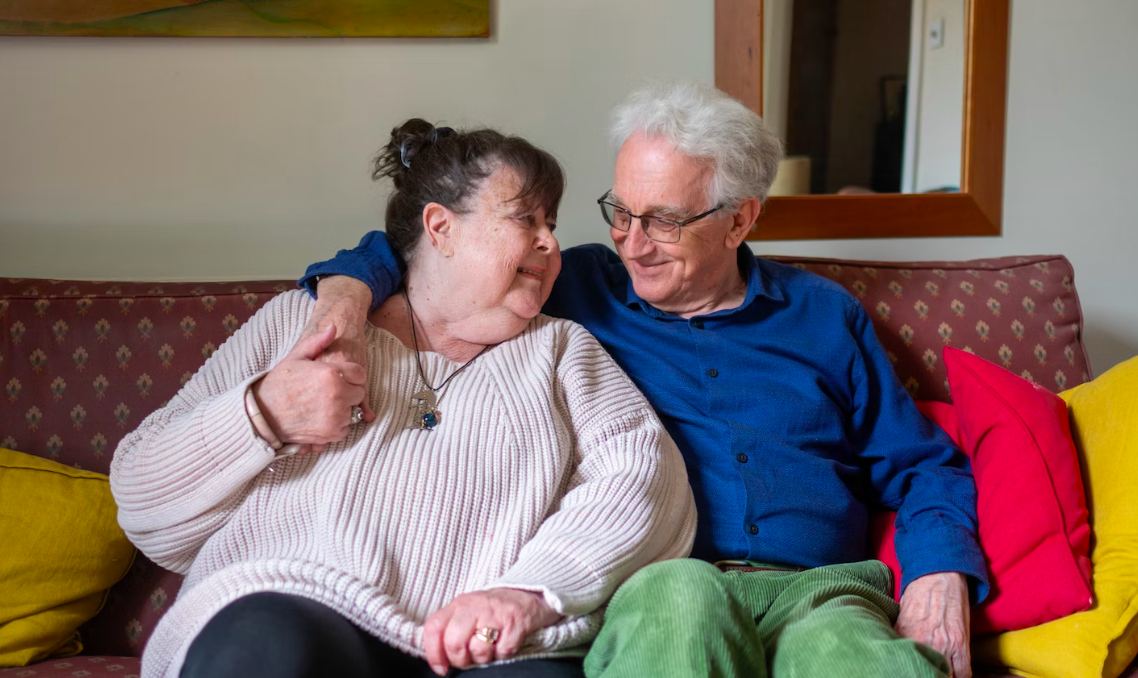Bad communication in a relationship can be a detrimental factor that undermines the foundation of any partnership. It manifests in various forms, often leading to misunderstandings, conflicts, and emotional distance between partners. Recognizing the signs of bad communication is crucial for maintaining healthy and fulfilling relationships. In this article, we will delve into the 20 key indicators of bad communication in a relationship, shedding light on the detrimental effects it can have on the overall well-being of the partnership.
1. Active Listening Is Not Your Thing
One of the most prevalent signs of bad communication in a relationship is the failure to engage in active listening. When partners are not fully present and attentive to each other’s thoughts and feelings, it can lead to misunderstandings and a sense of neglect.
Lack of active listening is a prevalent sign of bad communication in a relationship. It manifests when one or both partners fail to truly hear and understand what the other is saying. This often leads to misunderstandings, frustration, and feelings of being ignored or dismissed. When active listening is absent, conversations become one-sided, with each person talking at or past the other, rather than engaging in a meaningful exchange of ideas and emotions.
Furthermore, the absence of active listening can erode trust and intimacy over time. It sends a message that one partner’s thoughts and feelings are not valued, leading to feelings of isolation and resentment. This breakdown in communication can escalate conflicts and hinder resolution, as important cues and nuances are missed.
Recognizing and addressing this issue is crucial for a healthy relationship. Cultivating active listening involves giving full attention, demonstrating empathy, and validating the other person’s feelings. It lays the foundation for effective communication, fostering a stronger, more connected partnership.
2. You Both Avoid Difficult Conversations
Bad communication in a relationship often manifests through the avoidance of difficult conversations. Partners may choose to sidestep sensitive topics, which can lead to unaddressed issues and a buildup of resentment over time.
Avoidance of difficult conversations is a significant indicator of poor communication within a relationship. When partners shy away from addressing sensitive topics or expressing their true feelings, it creates a breeding ground for unresolved issues and pent-up emotions. This avoidance often stems from fear of conflict or a desire to maintain a facade of harmony, but ultimately leads to a lack of authenticity and intimacy.
Over time, this pattern can erode trust and lead to a sense of emotional distance between partners. Important issues remain unaddressed, potentially festering into larger problems. It also hinders personal growth and understanding, as open and honest communication is crucial for mutual support and empathy.
Recognizing the need for constructive dialogue, even in the face of discomfort, is vital for a healthy relationship. It requires courage, active listening, and a commitment to finding resolution. Embracing difficult conversations strengthens the foundation of a partnership, fostering deeper connection and mutual respect.
3. Stonewalling Is Your Thing
Stonewalling is a behavior characterized by withdrawing from a conversation and refusing to engage with the other person. This form of communication breakdown can be particularly harmful, as it creates a sense of isolation and frustration for both partners.
It involves one partner shutting down emotionally and refusing to engage in a conversation. This behavior manifests as silence, avoidance, or a complete lack of responsiveness. It is a potent sign of bad communication in a relationship, as it stifles open dialogue and hinders resolution.
Stonewalling can create a sense of isolation and frustration for the other partner, leading to a breakdown in trust and emotional connection. It can also escalate conflicts, as unresolved issues fester beneath the surface. In the long run, this pattern erodes the foundation of a healthy relationship.
Recognizing stonewalling is crucial for addressing communication issues. Couples should work together to establish a safe space for open, honest conversations, and seek professional help if needed. Healthy communication requires active listening, empathy, and a willingness to engage, even in difficult discussions. Overcoming stonewalling is a vital step towards rebuilding trust and strengthening the bond between partners.
4. There’s Less Appreciation And More Criticism Exist
Constantly criticizing or belittling a partner is a clear indication of bad communication in a relationship. This negative communication style erodes trust and self-esteem, making it difficult for the relationship to thrive.
This communication pattern is a clear sign of bad communication in a relationship. It creates a hostile environment and erodes trust, as it can make the criticized partner feel attacked, defensive, and inadequate.
Constant criticism can lead to a toxic cycle where one partner feels constantly judged and the other becomes increasingly frustrated with perceived shortcomings. It stifles growth and emotional intimacy, hindering the development of a healthy partnership.
Recognizing criticism and finding healthier ways to express concerns or disagreements is essential for fostering a positive, nurturing relationship. Effective communication involves focusing on behaviors, using “I” statements to express feelings, and seeking solutions collaboratively. By addressing criticism, couples can work towards a more supportive and respectful connection.
5. There Are Many Defensive Responses
Ineffective communication often involves defensive responses, where partners become overly protective of their own perspectives and unwilling to consider alternative viewpoints. This can lead to a lack of compromise and further strain the relationship.
Defensive responses are a common manifestation of poor communication in relationships. When confronted with criticism, feedback, or differing opinions, a person exhibiting defensiveness tends to react with self-protection rather than open-mindedness. This can take the form of denial, counterattacks, or deflecting blame onto the other partner.
Defensiveness hinders healthy communication by shutting down productive conversation. It creates a dynamic where one partner feels unheard or invalidated, leading to frustration and resentment. Over time, this pattern erodes trust and emotional intimacy.
Recognizing defensive responses is crucial for improving communication. It requires self-awareness and a willingness to listen without becoming overly protective. Instead of reflexively defending oneself, a more constructive approach involves acknowledging the partner’s perspective and seeking common ground.
Healthy communication thrives on vulnerability, empathy, and a willingness to learn and grow together. By addressing defensiveness, couples can foster a more supportive and collaborative relationship built on mutual respect and understanding.
6. Non-Verbal Actions Are More Than Words
Non-verbal cues, such as body language, facial expressions, and tone of voice, play a significant role in communication. When these cues are misinterpreted or ignored, it can lead to misunderstandings and a breakdown in emotional connection.
When non-verbal cues are misinterpreted or overlooked, it can lead to significant issues in communication within a relationship. One sign of bad communication is lack of eye contact, which can suggest disinterest, avoidance, or discomfort. Similarly, crossed arms or defensive body language may signal defensiveness or a lack of openness. Uneven or inconsistent gestures and facial expressions can create confusion and mistrust.
Moreover, inconsistent tone of voice, such as a sharp or sarcastic tone, can convey hostility even if the words used are benign. Avoidance of physical touch or intimacy can also be indicative of underlying issues. Additionally, failing to acknowledge non-verbal cues from a partner may signal inattentiveness or a lack of empathy. Addressing these non-verbal communication issues is essential for fostering a healthy and harmonious relationship, as they often reveal unspoken emotions that need to be acknowledged and understood for effective communication to flourish.
7. There’s More Of Passive Aggression Now
Using passive-aggressive behavior as a means of communication is detrimental to any relationship. This indirect approach to expressing dissatisfaction or frustration can create a toxic atmosphere of tension and resentment.
it can be a clear sign of bad communication. One common indicator of passive aggression is the use of sarcastic or veiled remarks, which mask true feelings and hinder open dialogue. Another sign is the silent treatment, where one partner withdraws and avoids communication as a way of expressing discontent. Procrastination or deliberately neglecting responsibilities can also be passive-aggressive tactics aimed at creating tension.
Additionally, making snide remarks or using humor as a guise for criticism can erode trust and emotional intimacy. Indirect expressions of displeasure through body language, like eye-rolling or heavy sighs, further exacerbate the issue. Passive aggression undermines healthy communication by avoiding direct expression of needs and emotions. Addressing this behavior is crucial for restoring honest and effective communication in a relationship, fostering a more supportive and understanding connection between partners.
8. Sending Mixed Signals
Sending mixed signals or contradicting oneself can be a sign of bad communication in a relationship. When partners are unclear or inconsistent in their communication, it can lead to confusion and frustration.
It occurs when verbal and non-verbal cues send conflicting messages, causing confusion and mistrust. For example, saying “I’m fine” with a strained smile and tense body language may indicate underlying distress or dissatisfaction. Similarly, promising to address an issue but continually avoiding it creates a lack of follow-through and erodes trust. Inconsistent messaging can also involve mixed signals about needs, desires, or boundaries, leaving partners uncertain about how to respond.
Furthermore, sudden changes in tone or demeanor without explanation can be disorienting and create a sense of instability. This type of communication breakdown hinders emotional connection and leaves both partners feeling unheard and disconnected. Addressing inconsistent messaging requires open dialogue and a commitment to clear, honest expression. It’s essential for partners to align their words and actions to rebuild trust and establish a foundation of effective communication in the relationship.

9. There’s Lack of Empathy
Empathy is a cornerstone of effective communication in a relationship. When partners fail to understand and validate each other’s feelings, it can lead to emotional disconnection and a sense of being unheard.
10. Less Support Emotional
Bad communication in a relationship often results in emotional neglect, where partners fail to provide the emotional support and validation that is crucial for a healthy partnership. This can lead to feelings of loneliness and isolation.
11. There’s Blaming and Deflecting Responsibility
Pointing fingers and deflecting responsibility is a common sign of bad communication. When partners are unwilling to take ownership of their actions or contributions to conflicts, it hinders the resolution process and perpetuates a cycle of blame.
12. Mind Reading and Assumptions Take Place More
Assuming one knows what their partner is thinking or feeling without open communication is a dangerous habit. This can lead to misunderstandings and unmet expectations, further exacerbating issues in the relationship.
13. No Value To Boundaries
Failure to establish and respect boundaries is another sign of bad communication in a relationship. When partners do not communicate their needs and limits clearly, it can lead to feelings of suffocation or neglect.
14. There’s Withholding Of Affection
Purposefully withholding affection or communication as a form of punishment or manipulation is a toxic communication pattern. It creates a hostile environment and erodes the foundation of trust.
15. Dismissive Behavior Is Bad
Ignoring or dismissing a partner’s concerns or opinions is a clear indication of bad communication. This behavior communicates a lack of respect and value for the other person’s perspective.
16. There’s Overemphasis on Winning Arguments
When communication in a relationship becomes a competition to “win” arguments, it undermines the collaborative nature of a healthy partnership. This can lead to power struggles and further deterioration of trust.
17. There’s Lack of Constructive Feedback
Providing feedback in a constructive and respectful manner is essential for growth and improvement in any relationship. When partners fail to communicate feedback effectively, it hinders personal development and can lead to stagnation.
18. Non-expression Of Feelings Lead To Emotional Outburst
Allowing emotions to build up to the point of explosion is a clear sign of bad communication. Healthy communication involves expressing feelings in a timely and constructive manner, rather than letting them fester until they become unmanageable.
19. More Use Of Manipulative Language
Using manipulative language or tactics to control or coerce a partner is a destructive form of communication. It undermines trust and creates a toxic dynamic that can be extremely damaging.
20. Reluctance to Seek Help
When partners persistently ignore or avoid seeking professional help for communication issues, it is a clear sign that bad communication patterns are deeply ingrained in the relationship. Seeking outside assistance can be crucial in breaking these patterns and rebuilding a healthy foundation for communication.
Recognizing and addressing signs of bad communication in a relationship is essential for nurturing a healthy and fulfilling partnership. By actively working to improve communication skills and fostering an environment of open and respectful dialogue, partners can build a strong foundation of trust, understanding, and mutual support. Remember, a relationship thrives on effective communication, and it is never too late to start making positive changes




